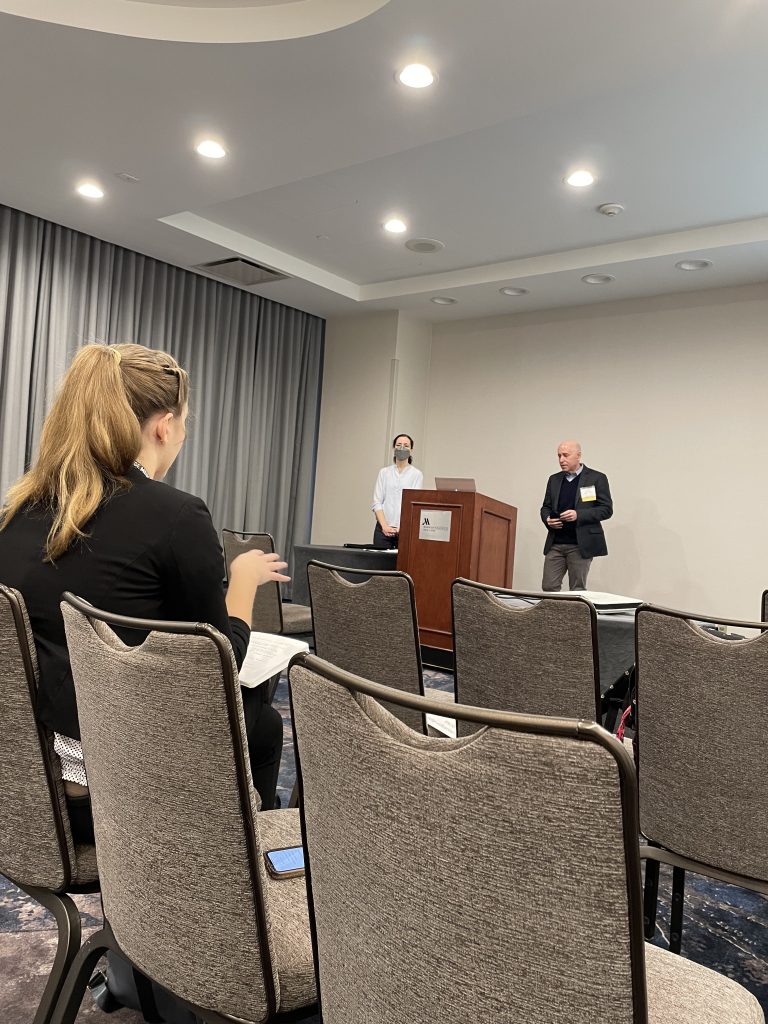Being able to find stories that fly under the radar
By Matt Poust
Hechinger 101: Media Blitz
Oftentimes the stories no one takes notice of end up being the hardest hitting. The ones that take searching every nook and cranny, chasing down offbeat leads and leaving no stone unturned. These are the stories that can prove vital to student journalists trying to break a big story and make a name for themselves.
These types of stories were the topic of discussion in this morning’s Hechinger 101: Story Blitz presentation held by ‘The Hechinger Report’ journalists Tara Garcia Mathewson and Jon Marcus.
As listed in the presentation’s description on CMA’s website, Mathewson and Marcus gave attendees advice on how to track down and report on the stories they wanted to tell; “The ones that may be hiding in plain sight,” the session description read.
Throughout their presentation, Mathewson and Marcus discussed a setlist of general themes that could help increase a journalist’s chance at finding their story in the rough. These themes mainly revolved around digging deeper into the public at large, and asking questions beyond those regarded as common knowledge.
The audience was composed mainly of university student journalists, so Mathewson and Marcus related these themes to stories that may exist on college campuses.
The first theme discussed was simply talking to everyone. Individuals ranging from taxi drivers to janitors and even cashiers. These individuals are overlooked in the public spectrum all too often, making them the perfect wielders for intriguing stories unheard.
“I’ve gotten leads on stories more than once by talking to Lyft drivers in different countries, they’re great leads for information,” Mathewson said. “I got a fortune cookie. I think stories are everywhere, talk to everyone; I know I probably revised it in my head as a journalist, but I’m pretty sure it said stories are everywhere, so that’s something to live by.”
Aside from just starting a conversation with the average Joe, Marcus stressed the significance of actually listening to what that person has to say. The details mentioned mindlessly through side conversation can often be the ones that hold the most value.
“Sometimes in the course of having a conversation about one thing, they will tell you something that you weren’t expecting. It’s really important that you let the conversation go there and not stick to a preordained list of questions,” Marcus said.
Branching off of the conversation themes, Marcus and Mathewson touched on the importance of asking insightful questions. “Asking the ‘next’ question and the questions that none of the other journalists are asking.” Marcus exemplified asking the next question by relating it to the ongoing talk surrounding inflation.
“Everybody’s talking about inflation and inflation is largely concentrated around energy and food. So ask yourself ‘Hey, don’t universities buy a lot of that stuff?’ They do; which means, and I’m sorry to bring this news to you, your tuition is going up next semester,” Marcus said.
This example of asking the next question strings directly into asking the under answered question. If everyone is reporting on the rising inflation, and you just found out your tuition is going up because of it, then be the first person to ask about that subject.
Mathewson and Marcus noted that along with asking these types of questions comes disregard and deception from most university higher-ups.
“Don’t regard your institution as somehow being on the moral high ground. Cover it as critically and skeptically… not necessarily cynically, but as skeptical as you can. You know those bumper stickers that say question authority?”
This sort of reporting from student journalists is something that Marcus has seen a lot more of in recent years according to him.

CMA student journalist Grace McDonald asks questions with presenters Tara Garcia Mathewson(left) and Jon Marcus(right).
“I think hard-hitting journalism has seen a large uptick from student journalists in the past few years, we’re headed in the right direction and I like what I’m seeing,” Marcus said.
After the several themes of in-depth journalism were discussed, Marcus and Mathewson opened the floor for a short question and answer period with students before wrapping up. The questions asked involved students reporting on their own hard-hitting stories on campus and sought answers from the presenters on how to effectively cover those stories.
